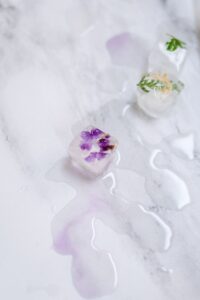Benefits, Tips, and Precautions

When it comes to skincare, it’s common knowledge that using the right products can have a significant impact on the health and appearance of your skin. However, there’s another factor that can play a major role in the effectiveness of your skincare routine: temperature.
Specifically, cold temperatures have been shown to have a range of benefits for the skin, from reducing inflammation to improving the absorption of active ingredients. In this blog post, we’ll explore the science behind skincare and cold temperatures, and offer tips on how to incorporate the benefits of cold into your own skincare routine.
Benefits of Cold Temperatures for the Skin
Cold temperatures have a range of benefits for the skin, and the science behind these benefits is clear. One of the main advantages of cold temperatures is their ability to reduce inflammation. When the skin is inflamed, it can become red, irritated, and sensitive. This inflammation can be caused by a variety of factors, including environmental stressors, hormonal changes, and certain skincare products. However, studies have shown that cold temperatures can help to soothe inflammation and calm the skin. This is because cold constricts blood vessels, which reduces blood flow to the affected area and decreases inflammation.
Another benefit of cold temperatures for the skin is their ability to improve the absorption of active ingredients. When you apply skincare products to your skin, they need to penetrate the skin barrier in order to be effective. However, the skin barrier can be a difficult obstacle to overcome, as it’s designed to keep foreign substances out of the body. This is where cold temperatures come in: they can help to temporarily disrupt the skin barrier, allowing active ingredients to penetrate more deeply into the skin. Additionally, cold temperatures can help to tighten the skin, which can further enhance the absorption of active ingredients.
Tips for Incorporating Cold Temperatures into Your Skincare Routine
Now that we’ve explored the benefits of cold temperatures for the skin, let’s take a look at some tips for incorporating these benefits into your own skincare routine.
- Use cold water when washing your face: One of the simplest ways to incorporate cold temperatures into your skincare routine is to use cold water when washing your face. This can help to reduce inflammation and soothe the skin, as well as improve the absorption of any products you apply afterwards.
- Try cold compresses or ice cubes: Another option is to use cold compresses or ice cubes on the skin, which can be particularly helpful for reducing puffiness and swelling around the eyes.
- Use refrigerated skincare products: Some skincare brands offer refrigerated products, such as face mists and sheet masks, that can provide a refreshing burst of coolness to the skin. These products often contain ingredients that are designed to work more effectively in cooler temperatures, such as antioxidants and peptides.
- Ice Roller: One of the easiest ways to incorporate cold temperatures into your skincare routine is by using an ice roller. An ice roller is a small handheld tool that you can store in your freezer and use to massage your face in circular motions. It helps to reduce inflammation, depuff the skin, and tighten pores.

Precautions for Using Cold Temperatures on the Skin
While there are many benefits to incorporating cold temperatures into your skincare routine, it’s important to take some precautions to avoid damaging the skin. Here are some things to keep in mind:
- Don’t expose the skin to extreme cold: It’s important not to expose the skin to extreme cold, as this can actually damage the skin barrier and lead to dryness and irritation. Be sure to use cold temperatures in moderation, and avoid using ice directly on the skin.
- Speak to a dermatologist if you have sensitive skin: If you have sensitive skin or a skin condition such as rosacea, it’s best to speak to a dermatologist before incorporating cold temperatures into your skincare routine. They can provide guidance on which products and techniques are safe for your skin type.
Conclusion
Incorporating cold temperatures into your skincare routine can have numerous benefits for your skin. From reducing inflammation and improving blood circulation to enhancing product absorption, cold temperatures can help to improve the overall health and appearance of your skin. Whether you choose to use an ice roller, sheet masks, cryotherapy, or a skincare fridge, incorporating cold temperatures into your routine is an easy and effective way to take your skincare game to the next level. So, give it a try and see the difference for yourself!

